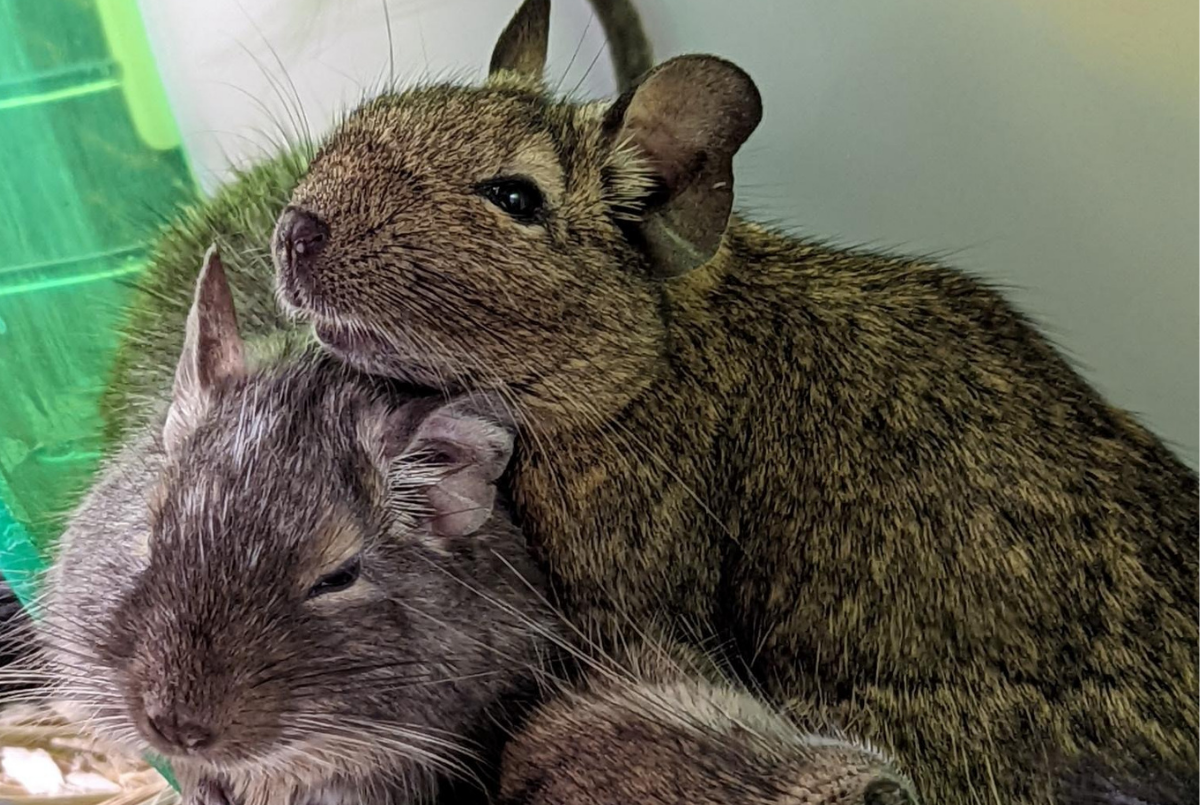Degu

Basic Information:
Scientific Name: Octodon degus
Habitat: Degus are found along coastal and central scrubland on the lower western slope of the Andes Mountains of Chile.
Diet: Degus are strictly herbivores. They feed on the leaves, bark, and shrub, grass, and thistle seeds.
Size: 0.5 to 0.6 feet long
Weight: 0.6 to 1.1 pounds
Lifespan: 6 to 8 years
Distribution Map:
I.U.C.N. Conservation Status:

What does this mean?
Least Concern – a species determined by the International Union for Conservation of Nature (I.U.C.N.) to be pervasive, abundant, and thriving.
Our Degus:
Betty White* (Female) – Estimated Date of Birth August 2021
Bea Arthur (Female) – Estimated Date of Birth August 2021
Rue (Female) – Estimated Date of Birth August 2021
*Betty White is a blue pied degu.
About Degus:
Degus are a diurnal rodent endemic to central Chile and are named after the local indigenous word for “mouse.” They are a very social species and live in groups of up to 10 individuals where they sleep, play, groom, and forage with each other. They are known to communicate within the group using a wide variety of noises. These communities allow the degus to work together to watch for predators, thereby removing the need for a single degu to bear the entire responsibility. They are also a very intelligent species and are one of the first species outside of apes and birds recorded using tools (in the case of the experiment, they used “rakes” to get food that they otherwise wouldn’t have been able to). To learn more about the Japanese experiment that observed this behavior, Click Here!
Did You Know?!
- Degus are social and tend to live in groups of one to two males and two to five related females. Females help to raise each other’s young.
- Degus are highly vocal and use various calls to communicate with one another.
- A degu’s vision is very important in their avoidance of predators and in foraging. It has been shown that degus are able to see ultraviolet wavelengths!
- Degus have an interesting way of escaping predators. If the tail is caught, a degu may spin until the skin comes loose or tail comes off.
- Degus are capable of understanding the time of day and are capable of developing their own daily (and nightly) schedules.
- Degus are so social, that they are capable of experiencing separation anxiety. They can also develop symptoms close to ADHD and Alzheimer’s.
- Mother degus are known to nest with each other and help care for and raise each other’s young.

